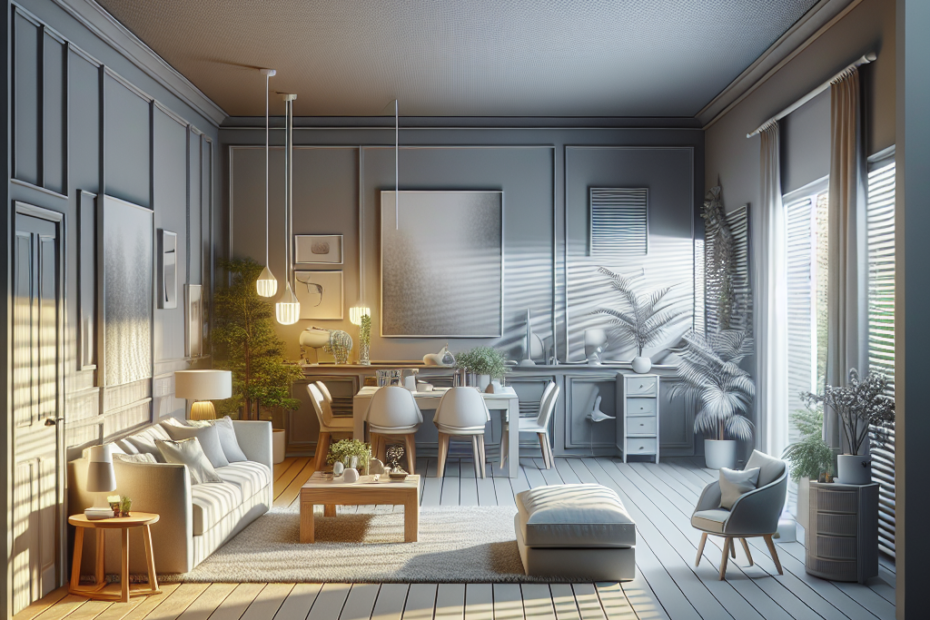How to Use Color to Make a Small Room Feel Larger
Many people live in homes with smaller rooms, whether it’s due to living in a city apartment or an older house with reduced space. They are always on the lookout for creative ways to make these rooms feel bigger without knocking down walls or making structural changes. Choosing the right color for small spaces can play a big role in making any area appear more expansive. Paying attention to the way they use color can change the perception of room size, creating a more open and airy feel.
Understanding Color Psychology
Colors affect how people perceive space. Lighter colors are often associated with a sense of openness and airiness. Statistics show that more than 60% of people perceive lighter colors as more inviting and spacious (Harvard). Using colors wisely can evoke feelings of calmness or energy, depending on the shades utilized. They can leverage color psychology to make a small room feel larger.
Choosing the Right Primary Colors
Using lighter shades of primary colors can instantly give an illusion of a larger room. Soft blues, gentle yellows, and pale pinks can reflect more light, making the walls recede and the space feel more open. According to interior design experts, sticking to a tight color palette with similar tones across different items in the space can also unify the look, helping to eliminate visual boundaries and expand the perceived space (Architectural Digest).
| Color Category | Recommended Shades | Effect |
|---|---|---|
| Neutral | Beige, Light Gray, Off-White | Creates a calming effect |
| Pastels | Soft Pink, Mint Green, Lavender | Adds subtle color while expanding space |
| Cool Colors | Sky Blue, Light Sea Green | Promote relaxation and openness |
Playing with Color Schemes
Color schemes are a combination of colors used in creating a look for a room. Monochromatic schemes, which use varying shades of a single color, simplify the visual clutter present in a small room. This scheme emphasizes a unified look, tricking the eye into thinking the space is larger than it is.
Incorporating Accents Wisely
Accents add character to a room. However, overdoing it can make spaces appear cluttered. They should opt for simple and limited accents in bolder colors to create focal points. For example, using a navy blue vase in a room with light-colored walls can draw the eye to that spot without overwhelming the senses.
Using Reflective Surfaces
Mirrors and glossy surfaces can significantly enhance the effect of color for small spaces. By bouncing light across the room, mirrors can make walls seem further apart, leading to an expanded viewpoint. According to Real Estate experts, having a big mirror can increase the brightness of a room by reflecting both natural and artificial light (Real Estate).
Lighting and Its Role
Proper lighting works hand-in-hand with paint colors to make a small room appear large. They should use natural light as much as possible, keeping windows unobstructed to allow sunlight to bathe the room. When combined with the right wall colors, a well-lit room appears inviting and expansive.
Avoid Dark Colors in Small Spaces
Although dark colors can add sophistication and moodiness, they can overtake a small space and make it feel enclosed. If they wish for a darker color, they should restrict its use to one accent wall to add depth without overshadowing the entire space.
Key Takeaways
- Light colors are ideal for expanding small spaces.
- Monochromatic color schemes can create a unified, spacious look.
- Accents should be used sparingly to avoid making the room feel cramped.
- Reflective surfaces increase perceived room size by enhancing light.
- Dark colors should be used minimally in small spaces.
FAQ
-
What is the best color for small spaces?
Light tones such as off-white, soft blue, and light gray are best for creating the illusion of space.
-
Can mirrors help make a room look bigger?
Yes, mirrors can reflect light across the room, making it appear larger.
-
Why are dark colors not recommended for small spaces?
Dark colors absorb more light, making the space feel closed-in and smaller.
-
Is there a way to use bold colors in small rooms?
Yes, they can use bold colors sparingly as accents to add interest without overwhelming the space.
-
How does lighting affect room size perception?
Natural and ample lighting works with color to make spaces look larger by illuminating dark corners.
